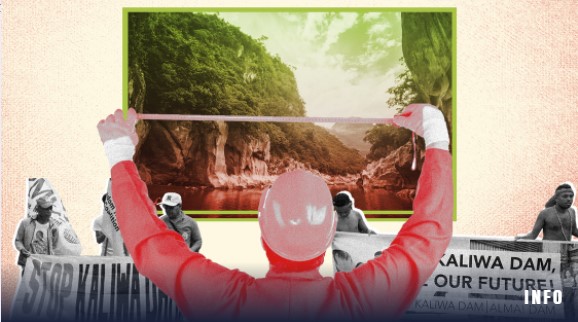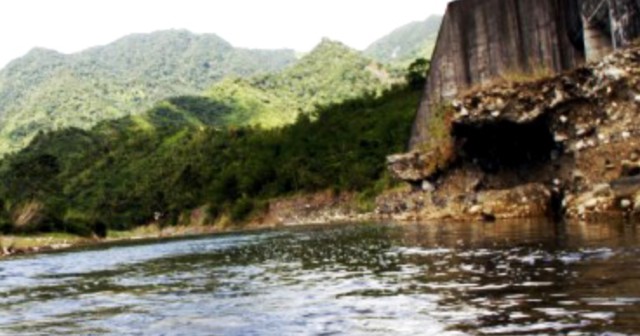[OPINION] Why should the construction of Kaliwa Dam be stopped?
By Liezle Precious Roldan Estrada
‘This project [goes] against so many laws that it should have been considered illegal’

The tragedy brought about by super typhoons rampaging our country highlighted the importance of a fully operational sewerage system and the crucial role of the Sierra Madre. Dams, watersheds, or any other large body of water need to be managed well to avoid flooding nearby towns.
Unfortunately, blocked sewerage, pollution, and strong water currents brought about by the super typhoons and the water spilled by the dam caused widespread flooding in some regions of Luzon. We would have suffered much worse if the super typhoons weren’t weakened by the tall, impenetrable walls of the Sierra Madre. This long mountain range is the main reason Super Typhoon Rolly didn’t wreak even more havoc after its landfall.
However, recent projects proposed by the Philippine government threatens the condition of this mountain range. The main project, in particular, is the construction of the Kaliwa Dam in General Nakar, Quezon. Not only will the construction of this dam cause irreversible environmental damage to the Sierra Madre, but it will also endanger numerous endemic wildlife, upset the biodiversity, and displace so many indigenous people native to the area.
This project also goes against so many laws that it should have been considered illegal. Unfortunately, the project continues to move forward in secret despite the many oppositions it has received from indigenous people, environmentalists, and various local organizations.
What is the Kaliwa Dam Project?

Proposed by the Philippine government way back in 2012, the Kaliwa Dam Project is one of numerous bulk water supply projects on the upper portion of the Kaliwa River Watershed. The government has been eyeing this area since the 1970s. Still, most of its proposed water supply projects have since been shelved because of environmental concerns, opposition from the indigenous people living in the area, or both.
The proposed design of the Kaliwa Dam had a 600 million-liters-a-day (MLD) capacity, with its water supply tunnel having a 2,400-MLD capacity. If the old project pushed through, it was expected to supply water alongside Angat Dam, Manila’s sole water storage facility. It was the main component of the New Centennial Water Source-Kaliwa Dam Project in Tanay, Rizal, which also called for constructing a water supply tunnel and various attendant infrastructure.
Laiban Dam, one of the other dams proposed as part of the integrated system, would have also been built if this project had pushed through. However, during Benigno Aquino III’s time, stage one was the only part of the project that received approval. The rest did not move forward until it was revived and reformed recently under the Duterte administration.
Now, the revisited Kaliwa Dam Project is well underway. The current administration decided to end its public-private partnership with Japan, and instead pushed through with China’s Official Development Assistance loan. This loan is more expensive than the previous agreement with Japan, having a 2% interest rate against Japan’s 1.25%.
According to the Environmental Management Bureau, the Kaliwa Dam Project:
“…will provide for the construction of a concrete gravity dam along the Kaliwa River with a dam height of 60+ meters referred to a riverbed elevation of 108 meters. It will cover a reservoir surface area of 291 hectares with a gross reservoir volume of 57 million m³ at the full supply level.”
It will also entail the construction of the following:
- A spillway at the right bank of Kaliwa River at elevation: 160+ meters
- Diversion Tunnel: Two at the left abutment area of the proposed dam
- Conveyance Tunnel: Length is 27.7 kilometers starting at invert level 120+ meters and ends at a level of 95+ meters with a tunnel diameter of 4 meters.
Why should its construction be stopped?
The Kaliwa Dam Project is not ethical, nor is it legal. It will infringe on so many people’s rights. It will endanger many flora and fauna, not to mention leave permanent environmental damage on the Sierra Madre mountain range. At its core, this water supply scheme, which should be a solution to Manila’s water supply problems, threatens the environment and the people.
For something violating many Philippine laws, especially against our indigenous peoples, this project should not have been given the Environmental Compliance Certificate. The ECC is a document needed for infrastructure projects that can negatively affect the environment.
The construction site falls under a protected ancestral domain. According to Haribon, this area is home to at least 5,000 Dumagat-Remontados indigenous people. Around 300 of them would be directly affected once the project pushes through. This project will cause many people from the affected barangays in Tanay, Infanta, and General Nakar to leave their ancestral domain.
Because of its precarious position, where it would directly impact so many indigenous people, the people behind the project should have secured the Free Prior and Informed Consent (FPIC) from them. Up until now, the EMB has failed to produce an approved FPIC.
Other effects of the project are as follows:
- Permanently displaces at least 126 species of fauna, including the endangered Philippine Eagle
- 300 hectares of forested area in the Sierra Madre will be permanently flooded
- Directly impacts and threatens at least 96 endemic species
- Violates the National Integrated Protected Areas System (NIPAS) Act and the Expanded NIPAS Act because the location includes a protected forest reserve and national park and wildlife sanctuary
- At least 100,000 lives will be put at risk with increased chances of heavy flooding in downstream areas
- Increased risk of heavy flooding and decreased protection against typhoons due to its impact on the Sierra Madre
- Costly project paid for with taxpayer’s money (despite the project being for the exclusive benefit of those who live in Metro Manila/NCR).
The Kaliwa Dam Project is expensive. From construction to maintenance, this dam will also upset the biodiversity in the area. This project, which would virtually just benefit those living in Manila, will be paid for by every taxpayer in the Philippines. Indeed, there are more cost-effective solutions to Manila’s water supply problems. It doesn’t have to be this overpriced, environmentally-harmful project.
The dam has numerous social and environmental concerns. Not only is it illegal, but it is also unethical. It infringes upon the human rights of our indigenous people and disturbs the biodiversity in the locality. If this dam’s construction pushes through, there will be lasting effects not only on the people and animals who live there but on nature itself. – Rappler.com
Liezle Precious R. Estrada is an educator by profession, and an environmental enthusiast at heart. She also dabbles in painting and calligraphy. In her free time, Liezle indulges herself in hiking and adventures.
